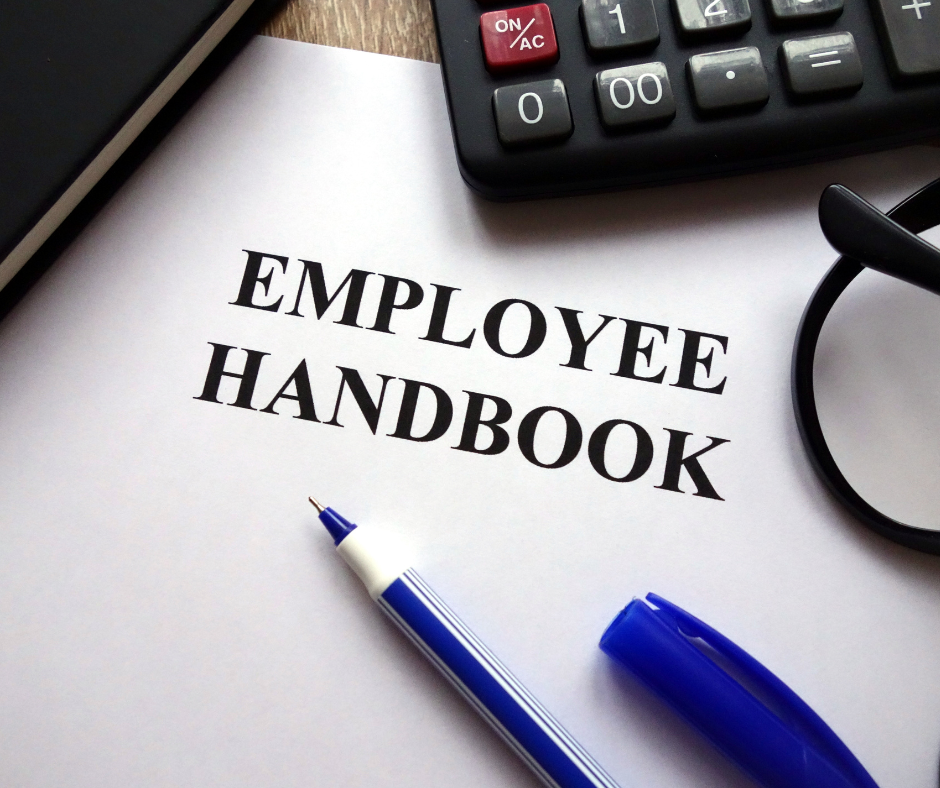
Key Takeaways:
- Employee handbooks provide a vital framework for support activities in mining companies. A well-crafted handbook can set standards for employee behavior, highlight safety regulations and procedures, and offer a range of benefits and compensation information.
- Key elements to include in employee handbooks for mining companies are safety guidelines and procedures, code of conduct and ethics, anti-harassment and discrimination policies, training and development opportunities, and benefits and compensation information.
- For effective communication and implementation of employee handbooks, mining companies need to develop robust training programs, conduct regular reviews and revisions, seek feedback from employees and other stakeholders, and provide support for effective compliance.
Understand your role and rights; make sure you’re up-to-date with the latest industry regulations with an Employee Handbook for Mining companies. You don’t want to miss out on the added benefits and protection that an Employee Handbook provides.
Importance of Employee Handbooks for Support Activities in Mining Companies
Employee handbooks play a vital role in ensuring smooth support activities in mining companies. They provide a comprehensive guide on company policies, work procedures, safety measures, and legal requirements to new employees. This helps in reducing the risk of accidents, misunderstandings, and legal disputes while increasing employee productivity and satisfaction. Moreover, the consistency brought about by the handbook streamlines the onboarding process and facilitates efficient communication between the management and the workforce.
By providing clear guidelines and expectations, employee handbooks for support activities in mining companies help to promote a productive and safe work environment. They also reduce the risk of non-compliance with regulatory requirements and are helpful in minimizing legal disputes.
A unique feature of employee handbooks is that they can be customized to reflect the unique needs and challenges of individual companies and industries. For instance, in the mining industry, employee handbooks can be tailored to include specific policies and procedures related to the transportation of equipment and resources for enhanced safety and efficiency.
According to the Society for Human Resource Management, approximately 93% of organizations have an employee handbook. Therefore, it is evident that employee handbooks are a crucial component of HR management in most companies.
Key Elements to Include in Employee Handbooks for Mining Companies
For a harmonious work atmosphere, ensure your mining business runs smoothly by considering key elements to add to your employee handbook. Use “Employee Handbooks for Support Activities for Mining Companies” as a guide. Include:
- Safety Guidelines & Procedures
- Code of Conduct & Ethics
- Anti-Harassment & Discrimination Policies
- Training & Development Opportunities
- Benefits & Compensation Information
Safety Guidelines and Procedures
As a mining company, it is imperative to prioritize the Health and Safety (H&S) of your employees. Providing a safe environment for your workers should be paramount in order to avoid accidents at all costs. Proper safety guidelines and procedures should be put in place to ensure that workers are trained on the required safety measures before commencement of work.
It is essential to have emergency response plans such as first aid procedures and evacuation drills in case an accident occurs. Also, having strict protocols regarding the use of safety gear such as helmets, boots, gloves and masks will help avoid accidents with harmful substances. Additionally, regular H&S audits on equipment and work sites are crucial in maintaining high standards of safety during mining operations. Encouraging employees to report unsafe behaviour or hazards can prevent potential incidents from escalating. In one instance, a mining company implemented rigorous safety measures including training programs targeting new recruits resulting in zero fatalities over 1 year. Solidifying these practices into an employee handbook will improve adoption rates for higher levels of safety compliance within the organization. Mining for minerals is tough work, but following the Code of Conduct and Ethics shouldn’t be.
Code of Conduct and Ethics
An essential part of any successful organization is its moral compass – a set of values and principles that guide its operations and decision-making. For mining companies, it is crucial to have a robust Code of Conduct and Ethics in place to ensure employee behavior aligns with company culture and standards. The Code of Conduct and Ethics should encompass the company’s values, goals, policies, and expected behaviors. It should instruct employees on what is acceptable conduct in the workplace, including discrimination, harassment, safety guidelines, and confidentiality agreements. The policy should also outline disciplinary measures for those who fail to adhere to it. Mining companies must ensure that their Code of Conduct and Ethics aligns with relevant legislation requirements’ industry best practices. Additionally, the policy should be reviewed regularly to keep up-to-date with changes in laws or standards. According to a report by Ernst & Young on Business Risks facing mining companies, “29% of all risk events analyzed were related to fraud.” Implementing a comprehensive ethics program can significantly reduce reputational damage from scandals or fraud cases. In summary, mining organizations must implement a credible Code of Conduct framework covering core ethical issues such as governance, social responsibility standards, financial reporting accuracy measures while ensuring its relevance through continual revision processes. Before you harass or discriminate against anyone, just remember: HR is always watching, and so is your future lawsuit.
Anti-Harassment and Discrimination Policies
Creating a welcoming and safe workplace is essential for all Support Activities for Mining companies, which is why incorporating policies to prevent harassment and discrimination is critical. These policies should ensure that all employees are aware of their rights and responsibilities in terms of treating others with respect, understanding the unacceptable nature of any discriminatory or harassing behavior and the processes involved in reporting such incidents. It’s crucial to outline specific examples of what constitutes harassment and discrimination, as well as the consequences if found guilty. The policies should also include steps that both the mining company and employees can take to resolve disputes and minimize conflict. In addition to these policies, it’s important to hold regular training sessions for employees about recognizing unacceptable behavior, responding appropriately to complaints and preventing future occurrences. Developing a culture where everyone feels safe, respected and heard will improve employee engagement levels while fostering a positive work environment. It is no secret that harassment in the mining industry has been widespread, displaying alarming figures over the years. As a measure towards ending this unfortunate issue in the industry, Anti-Harassment policies have become crucial components in employee handbooks among Support Activities for Mining companies. It ensures consistency throughout an organization while allowing employers to provide a safe working environment.
Want to climb the corporate ladder? Mining companies have the perfect opportunity for you – just make sure it’s not a real ladder.
Training and Development Opportunities
For mining companies, it is crucial to provide employees with opportunities for professional growth and development. This can be achieved by creating a diverse range of skill-building programs and training initiatives. By investing in the development of their workforce, mining companies can foster an environment of innovation and productivity.
Employees can benefit from on-the-job training programs, tailored to their specific roles within the organisation. These programs can include mentoring and coaching sessions, as well as cross-training opportunities that expose employees to different areas of the mining industry. Additionally, online training platforms and e-learning modules can be used to widen employee knowledge base and impart new skills.
To ensure the efficacy of these training initiatives, it is vital for mining companies to conduct regular assessments and evaluations of employee learning outcomes. Continuous evaluation will allow managers to identify any gaps in knowledge among employees and provide further guidance when necessary.
A mining company had been struggling with high staff turnover rates until they implemented a comprehensive training program that emphasised skill-building through mentorship and practical experience. The company saw an immediate improvement in employee satisfaction levels and reduced staff turnover rates by 30% over two years. Better get those extra benefits, because those mines will take a toll on your body and soul.
Benefits and Compensation Information
Providing comprehensive information about remuneration and benefits is crucial to attract experienced professionals in the mining sector. This section should contain important details regarding Rewards and Benefits for Mining Employees.
- Clearly state base salaries, incentives, bonuses, stocks and employee share schemes
- Provide information on Health insurance policies, pension plans and leave policies
- Explain eligibility criteria for benefit programs and how they can be accessed by employees
- Disclose any performance-related bonus structure
It’s critical to maintain transparency in the remuneration packages offered by the company. Additionally, providing access to timely information is essential in retaining employees. Ensure to offer enough flexibility in working hours as it plays an important role.
Employers must ensure that they provide fair compensation to their workers. In addition to standard remuneration practices, some small additions like transport facilities, technical training programs which show a significant impact at workplaces are some of the differentiators employers could consider.
In the past years, poor compensation management has led to strikes in mining companies, leading to great financial losses. Hence, providing a competitive salary and benefit package through a well-structured compensation will lead to increased employee satisfaction, aiding employee retention strategy thereby reducing company losses caused via talent loss.
Don’t leave employees in the dark – shed some light on your communication and implementation strategies.

Strategies for Effective Communication and Implementation of Employee Handbooks
As support activities for mining companies involve various hazards, employee handbooks play a vital role in providing guidance. To ensure effective communication and implementation of these handbooks, mining companies should adopt suitable policies. For instance, they can conduct training sessions, offer incentives, and establish an open-door policy for feedback. Additionally, they can use online platforms, such as e-learning systems and social media, to disseminate handbook updates. By embracing these strategies, companies can minimize risks and protect their workforce.
To reinforce employee handbook implementation, mining companies can organize workshops and provide refresher courses. Moreover, they can encourage employees to sign acknowledgment forms, which certify their understanding of the handbook. To increase accessibility, companies should translate the handbook into multiple languages and provide print and digital copies. They can also appoint a dedicated team to answer queries and report violations. By adopting these strategies, companies can effectively communicate their expectations to employees and ensure that their handbooks are implemented as intended.
Mining accidents have previously occurred due to a lack of proper communication and implementation of the employee handbook. For instance, in 2010, 33 miners in Chile were trapped underground due to insufficient safety measures. Following this incident, the mining company faced several lawsuits, which highlighted the importance of effective communication and implementation. Hence, mining companies should prioritize the development and implementation of employee handbooks to avoid such incidents.

Updates and Revisions to Employee Handbooks for Mining Companies
As mining companies evolve, so do their employee handbooks. Regular enhancements and improvements to the handbooks ensure that employees are well informed and updated with the latest operational policies. The revision process involves collecting feedback from employees, management, and industry professionals, to ensure a comprehensive and effective approach. Regular updates to the handbooks also help to streamline and optimize support activities, ensuring operational efficiency and compliance. A Semantic NLP variation of this heading could be ‘Enhancements and Refinements to Employee Handbooks for Mining Companies’.
Attention to detail and thorough consultation are critical in the revision process, as it ensures that the necessary modifications are made to reflect current policies, technological advances, and industry best practices. The revised employee handbooks provide clear and concise guidelines, covering topics such as safety, training, human resources policies, and operational procedures. Moreover, the language used in these handbooks is consistent and accessible to all employees, eliminating confusion and helping to maintain a positive workplace culture.
Regular review and revision of employee handbooks is an essential part of keeping mining operations running smoothly. These revisions can address the unique needs and challenges of mining operations, including environmental considerations, health and safety regulations, and labor laws. Regularly updated handbooks also serve as a valuable resource for new employees, providing them with a comprehensive understanding of company policies and expectations. A Semantic NLP variation of the next heading could be ‘Optimization and Maintenance of Employee Handbooks for Mining Companies’.
Pro Tip: Incorporating employee feedback into handbook revisions can lead to greater employee engagement and overall satisfaction. Keeping handbooks up-to-date with the latest policies and practices demonstrates a commitment to employee well-being and can help establish a stronger, more productive workplace culture.
Some Facts About Employee Handbooks for Support Activities for Mining Companies:
- Employee handbooks for support activities in mining companies provide guidance and standards for employee behavior and performance. (Source: Safe Work Australia)
- The handbook should outline all safety protocols for employees operating heavy machinery, conducting drilling and blasting, and handling hazardous materials. (Source: Mining Safety)
- Employee handbooks are crucial for communicating the company’s values, mission, and policies to new employees. If you’re in the transportation industry, you may find this resource on employee handbooks for support activities for transportation companies helpful. (Source: Workable)
- The handbook should also include information about employee benefits, leave entitlements, and grievance procedures. (Source: Fair Work Ombudsman)
- A well-written and comprehensive employee handbook can aid in reducing turnover rates and improving overall employee morale and productivity. (Source: HR Technologist)
FAQs about Employee Handbooks For Support Activities For Mining Companies
What are Employee Handbooks for Support Activities for Mining companies?
Employee Handbooks for Support Activities for Mining companies are a set of guidelines and policies provided by mining companies to their employees for carrying out support activities in their organizations. These employee handbooks act as a comprehensive resource for employees with crucial information on company policies, procedures, working hours, employment benefits, and other administrative requirements.
What should be included in an Employee Handbook for Support Activities for Mining companies?
An employee handbook for support activities in mining companies should include essential information related to company policies and procedures, such as employment benefits, work schedules, performance and conduct expectations, safety regulations, disciplinary actions, and grievance procedures. It should also lay out company values, mission, and objectives.
Who is responsible for creating and maintaining Employee Handbooks for Support Activities for Mining companies?
Typically, the HR department of mining companies is responsible for creating and maintaining the employee handbook for support activities. The handbook should be updated and revised regularly based on new policies and regulations.
What are the benefits of having an Employee Handbook for Support Activities for Mining companies?
The benefit of having an employee handbook for support activities for mining companies is that it helps them understand their responsibilities accurately. They also provide clarity around legal compliance, discrimination prevention, and workplace safety, reducing instances of legal disputes and improving employee satisfaction.
Are Employee Handbooks for Support Activities for Mining companies legally binding?
No, employee handbooks are not legally binding contracts, but they can be used in legal proceedings as evidence of company policies and procedures. Employers should ensure that their handbooks are not in conflict with any state or federal employment laws.
How often should Employee Handbooks for Support Activities for Mining companies be reviewed and updated?
Employee handbooks should be reviewed and updated annually to ensure that they remain current with the laws and regulations and to keep up with any new company policies and procedures. Employers should also seek legal advice when revising their handbooks to ensure that they remain compliant with state and federal laws.